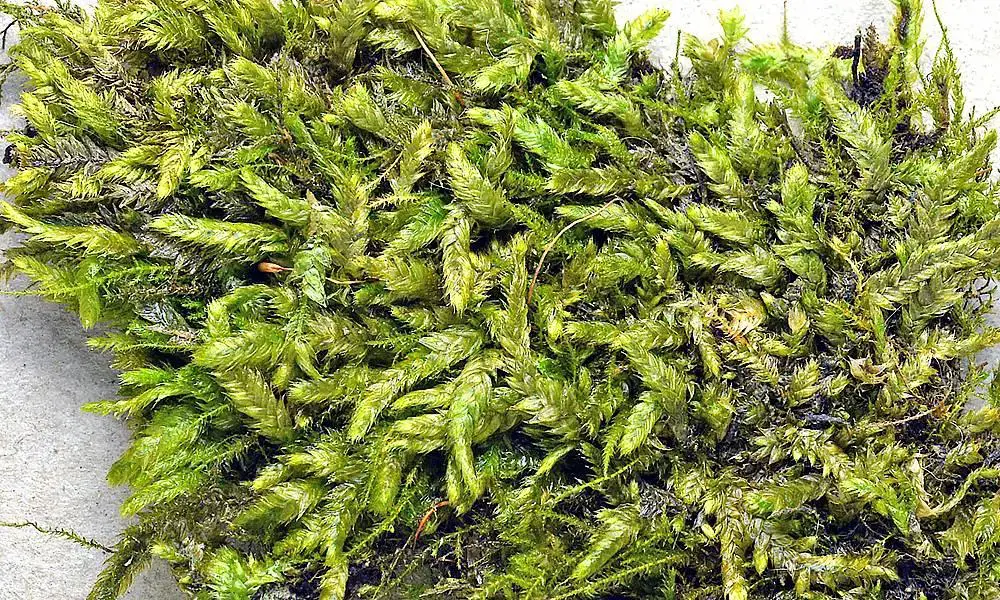
Herzogiella_turfacea_MA013_-_w_1612314405.jpg from: https://bryophyteportal.org/portal/taxa/index.php?taxon=159340
Herzogiella turfacea: The Fascinating Moss of Peat Bogs
Introduction
When you think of mosses, what comes to mind? Fuzzy green carpets covering rocks and logs in the forest? While many mosses fit this description, there are some truly unique and fascinating species out there. One such moss is Herzogiella turfacea, a resident of peat bogs and other wet, acidic habitats. Let’s take a closer look at this intriguing little plant.
Background on Herzogiella Mosses
Herzogiella turfacea is a species of moss in the Plagiotheciaceae family. The genus

medium.jpeg from: https://www.inaturalist.org/taxa/163698-Herzogiella-turfacea
Herzogiella contains about 15 species found in Europe, Asia, and North America. They are characterized by their glossy, flattened shoots and leaves with a single costa (midrib).

normal_herzogiellaturfaceapino.jpg from: https://www.vastavalo.net/herzogiella-turfacea-korpihohtosammal-suomen-kansainvalinen-vastuulaji-939660.html
H. turfacea was first described by the Swedish bryologist Sextus Otto Lindberg in 1872. The species name “turfacea” comes from the Latin word for peat, referring to its typical habitat.
Morphology and Identification
Herzogiella turfacea forms loose mats of prostrate or ascending shoots. The shoots are irregularly branched and range from

TUR118851%2B1467393914.jpg from: https://v3.boldsystems.org/index.php/Taxbrowser_Taxonpage?taxid=410850
1-4 cm long. Leaves are

largepreview.png from: https://www.researchgate.net/publication/306242274_Herzogiella_turfacea_Lindb_Z_Iwats_Plagiotheciaceae_Bryophyta_new_to_Turkey
1-2 mm long, ovate to ovate-lanceolate in shape, and have a short, double costa. They are glossy and yellowish-green in color.
Capsules are produced on 1-2 cm long setae

28701_771_5.jpg from: https://artfakta.se/naturvard/taxon/herzogiella-turfacea-771
and are inclined to horizontal, short-cylindrical, and slightly curved. Spores mature in the summer.
H. turfacea can be distinguished from similar species by its habitat, yellowish color, short and double costa, and curved capsules.
Global Distribution and Habitat
Herzogiella turfacea has a circumboreal distribution, found in northern and mountainous regions of Europe, Asia, and North America. Its range extends from Greenland and Iceland to Siberia, with scattered occurrences in the mountains of central and southern Europe.
This species grows in peat bogs, fens, wet meadows, and other constantly moist, acidic habitats. It often grows mixed with Sphagnum mosses and other peat bog specialists. In North America, it is most common in the boreal regions of Canada and Alaska.

maxresdefault.jpg from: https://www.youtube.com/watch?v=nGWUzD7hO0Q
Ecological Roles and Adaptations
As a resident of peat bogs, H. turfacea plays an important role in these unique ecosystems. Peat bogs are wetlands characterized by their accumulation of peat (partially decayed plant matter) and acidic, low-nutrient conditions.
Mosses like

Herzogiella-striatella-273.jpg from: https://sites.cortland.edu/bryophytes/field-guide/mosses/pleurocarp/herzogiella-striatella/
H. turfacea help in the formation of peat by trapping and holding water, creating an environment suitable for other bog plants. They also contribute to the accumulation of organic matter as older parts of the plants die and are incorporated into the peat.
H. turfacea shows several adaptations to its wet, acidic habitat:

normal_korpihohtosammalpino2.jpg from: https://www.vastavalo.net/herzogiella-turfacea-korpihohtosammal-752034.html
- Thick cell walls to prevent water loss
- Ability to absorb water and nutrients over its entire surface
- Tolerance of low nutrient levels and acidic conditions

0.JPG from: https://blog.naver.com/PostView.naver?blogId=irisch715&logNo=221813481669&categoryNo=7&parentCategoryNo=0
- Production of abundant spores to colonize new areas
Conclusion
Herzogiella turfacea may be a small and inconspicuous moss, but it is a fascinating part of peat bog ecosystems. Its ability to thrive in harsh conditions and contribute to the unique character of bogs makes it an important species.
Next time you’re in a peat bog, take a moment to appreciate the intricate world of mosses at your feet. Who knows what other amazing bryophytes you might discover?